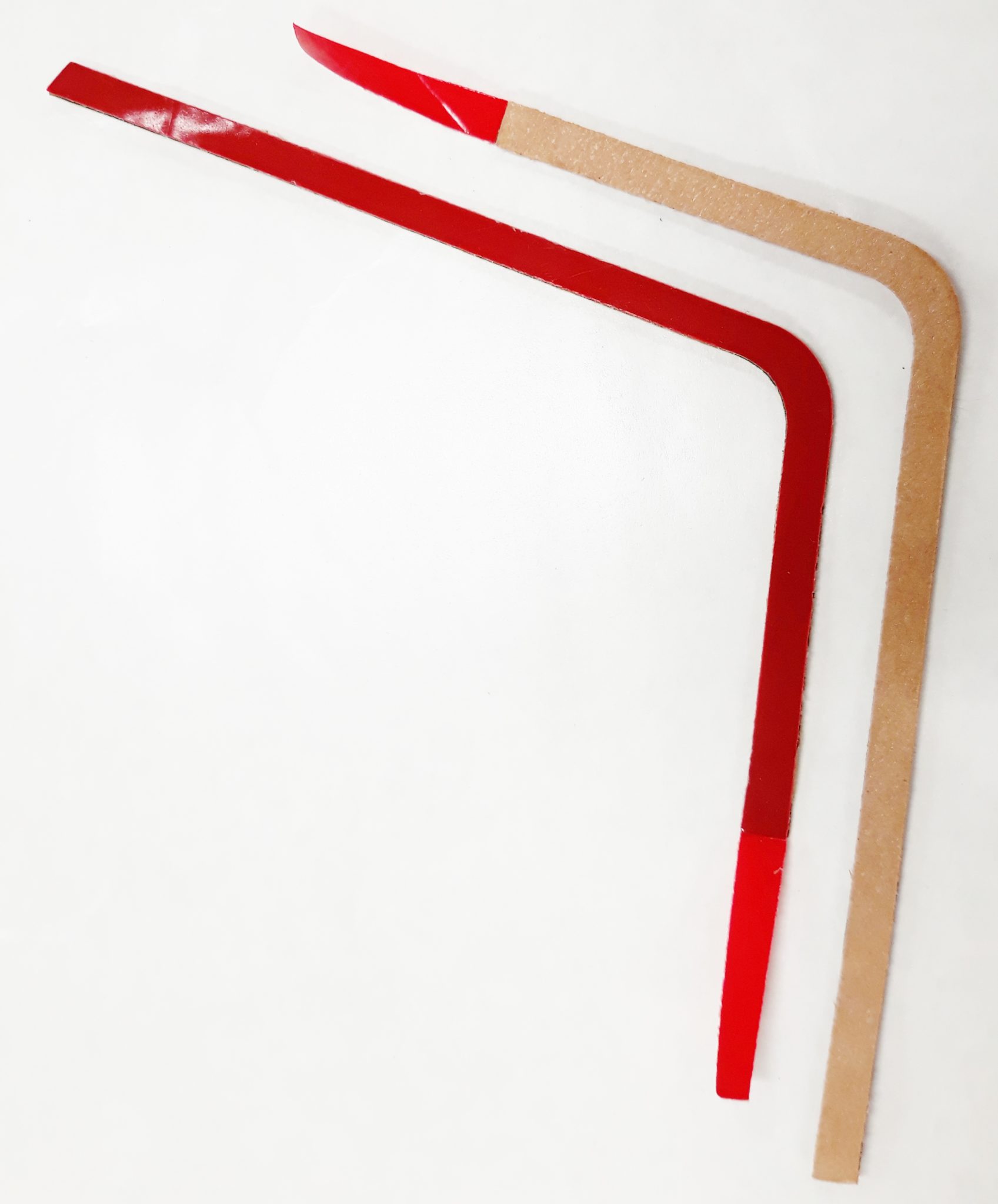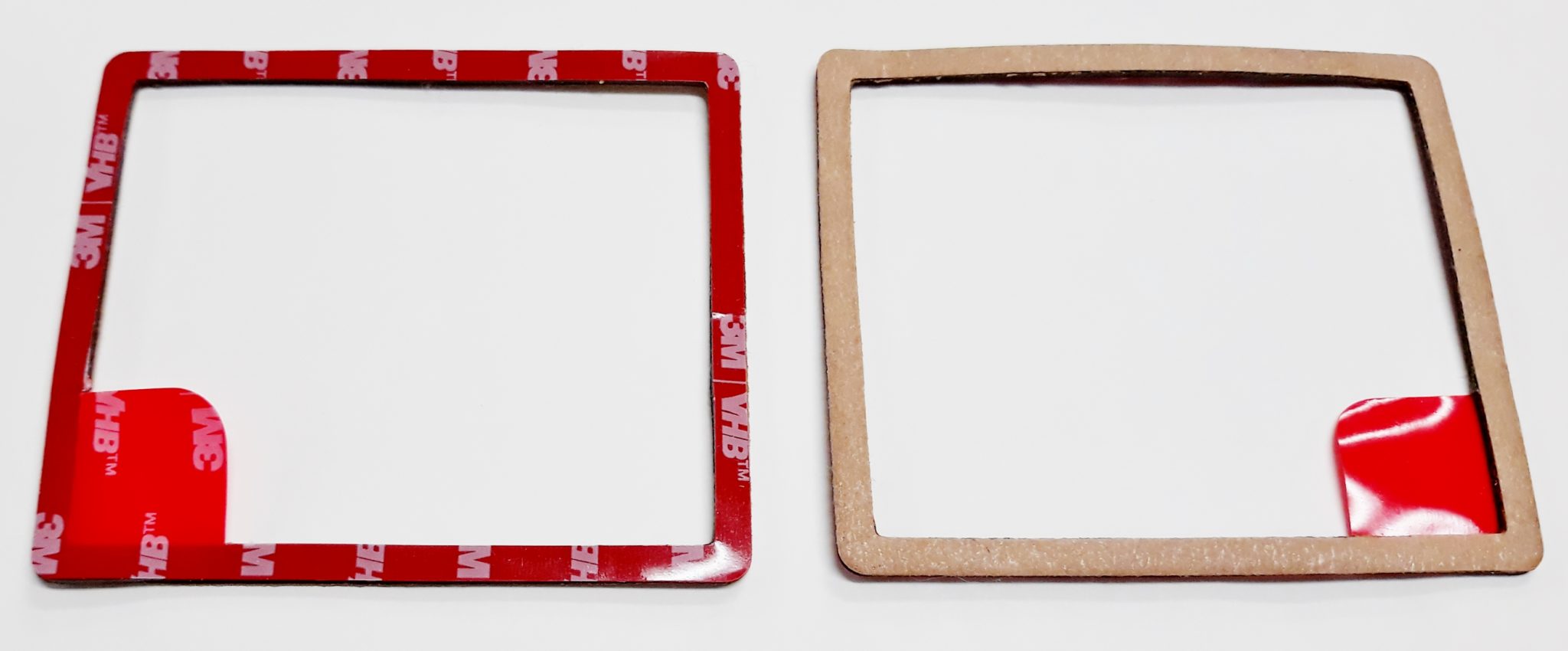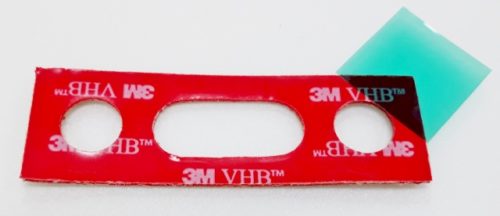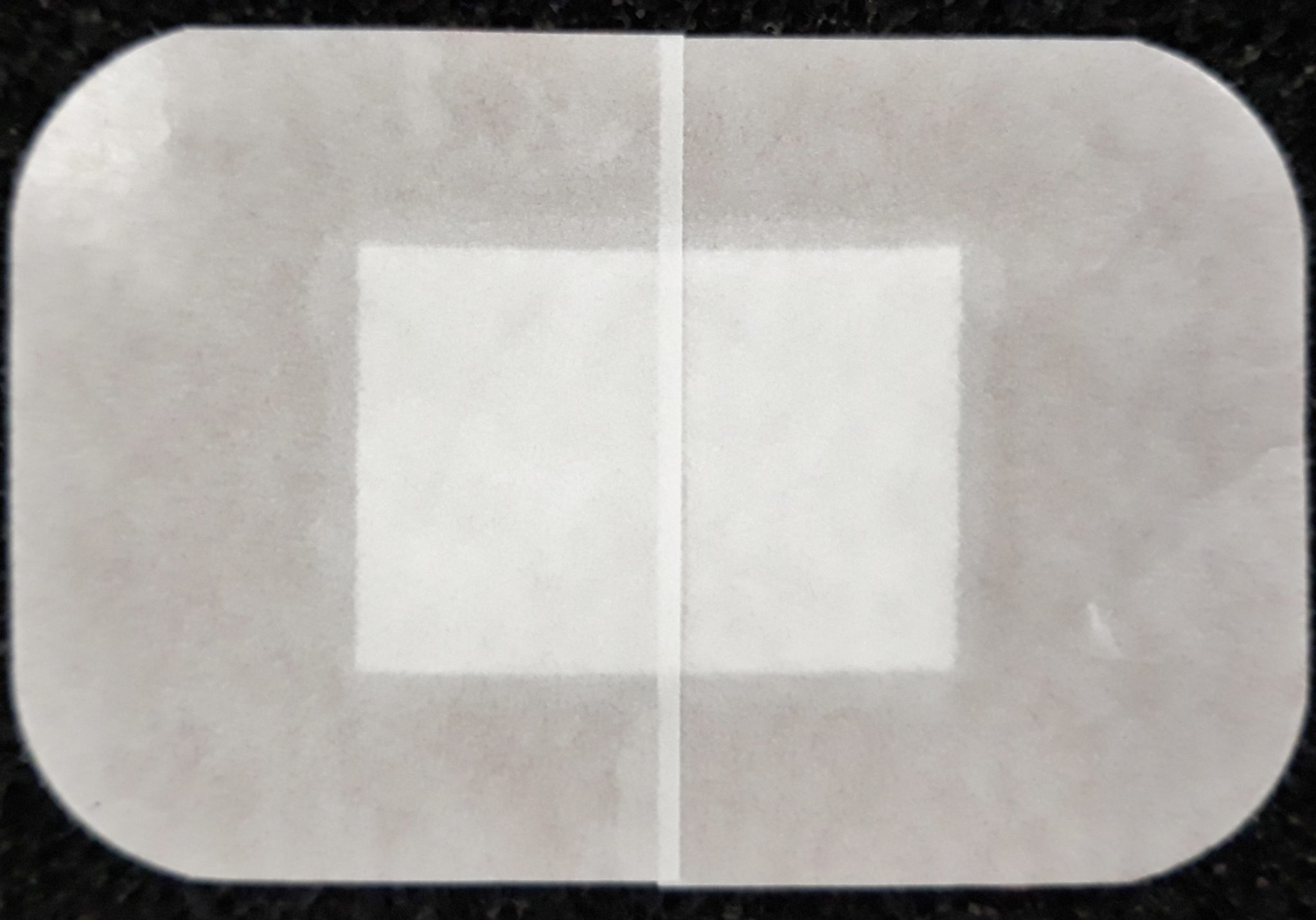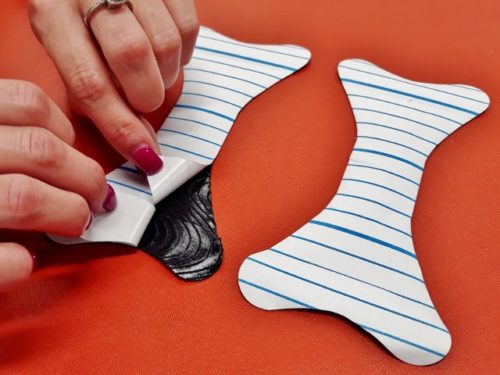Sometimes removing the liner from a die cut part can be difficult and when it comes to high volume applications, saving time can add up to dollars in the bank. One way of achieving a simple time saver is adding a pull tab or split liner to the die cut part used during assembly. In this blog, we will highlight a few of the ways CGR Products achieves these added benefits.
Pull Tabs
A pull tab in its simplest form is an area of the adhesive release liner that is kiss cut adjacent to the part to allow for easy liner removal. Kiss cutting is a process where the die cuts through the part but stops short of cutting through the liner. The greatest benefit of pull tabs is ease of liner removal during assembly. A pull tab creates a better grip and allows for faster and more consistent processes.
I will explain this using the photo to the right as a reference and how it is used. This particular fastener is 3M™ VHB™ tape used to hold a mud flap on a vehicle.
- This material comes in master rolls and has the factory red 3M™ film liner on one side (left)
- We laminate the 2nd brown Kraft liner to the backside of the 3M™ VHB™ tape (right)
- During the die cutting process, the part is cut all the way through both liners and the tape around the exterior dimension. The tab at the top of the part is created by kiss cutting to the red liner and removing the VHB tape, thus creating the “tab”.
- The die cut VHB™ parts with the pull tabs as shown are then shipped to the manufacturer making the plastic mud flap, typically a tier supplier. The tier supplier will remove the brown Kraft liner and apply the VHB™ part to the mud flap. The Kraft liner is a heavy board stock and removes easily by hand. Once applied these assemblies are shipped to the automotive OEM.
- During assembly at the OEM, the associate (or robot) simply grabs the pull tab and removes the film liner which exposes the adhesive, then adheres the mud flap to the automobile body.
Sometimes depending on the material, the excess material of the pull tab does not need to be removed. A material such as closed cell sponge will allow the sponge to stay on the tab, giving the user even more area to grab. In this case with VHB™ tape, the excess material has to be removed because the adhesive can fuse back together.
As shown in the example above, the pull tab is basically external to the VHB™ part. The pull tab is created by removing the extra material. This extra material is wasted and factors into the part cost to some degree. A rather easy analysis can be made between the added costs of the pull tab versus the cost of a standard die cut part, along with the associated cost of labor to remove the liner.
Sometimes when designs allow, pull tabs can be internal. Internal pull tabs will be used where scrap is already present thus not adding to the material cost. The example below will show this best. This gasket is a typical id/od rectangle. The center will be scrapped regardless. This pull tab is kiss cut down to the red liner and the pull tab is exposed when the waste is removed.
Tabbing Tape Pull Tab
When gasket designs or lower volumes prohibit a pull tab from being created, an alternate method known as “tabbing tape” may be used. Tabbing tape is typically a specialized adhesive film that is supplied in rolls. The roll will consist of small rectangles of a special adhesive that will stick to a silicone treated liner. There will also be a “dry edge” portion of the tab where no adhesive is present to allow for the grab point. The tab is placed on the die cut part liner, then using a heat bond gun, the tab is bonded to the liner using heat and pressure.
When done properly, the tab will make a permanent bond to the liner. Many factors have to be considered when using tabbing tape such as liner type, accurate placement, surface cleaning or buffing, temperature, pressure and dwell time.
Analyzing the differences
Adding a pull tab to a die cut part will take into account several factors, such as volumes, shape, layout, material selection, thickness, and adhesive types. Understanding these factors will determine if a pull tab can be external, internal or none at all. An external pull tab will typically be preferred due to the ease of use.
Die cut parts with pull tabs can commonly be produced on high volume runs where extra costs can be absorbed. Typically the cost of adding a pull tab increases the cost of the die cut part due to extra processes or run times during manufacturing. Depending on volume, these costs versus a standard die cut can be proportionate. These extra manufacturing processes are also why it is not feasible to add pull tabs on low volume parts. Set up times and run rates for low volume parts would inflate the price substantially.
Split Liners
Split liners are another way to save time and money during assembly. Split liners come into play when very high volumes are being processed. A commonly seen example of split liners is the liner used on most band aids.
Processing split liners involves precision die cutting machinery and high precision tolerance rotary dies. Typically the adhesive is applied to the material first, and then at the die cutting stages, the part and split liner are cut in sequence. The dies used in this die cutting stage are machined to very high precision allowing just the liner to be cut alone.
The costs in tooling are typically more expensive than standard steel rule dies; however, being used in high volume applications the cost is absorbed over the life of the program. The tooling is a one-time cost, and a quality high precision tool will cut for several years afterward.
Just as when analyzing a pull tab, a rather easy analysis can be made between the cost of the split liner, versus the cost of a standard die cut part along with the associated cost of labor to remove the liner. In the case of end user applications such as band aids, it becomes a matter of ease of use for the individual.
Learn More
Consider CGR Products when you are developing your next high volume die cut parts. With over 170,000 square feet of manufacturing and warehouse space and over 100 top-quality machines, CGR serves a diverse range of clients, including those in the automotive industry. To learn more about our capabilities, visit our High Volume Rotary Die Cutting Page or feel free to Contact Us today.
